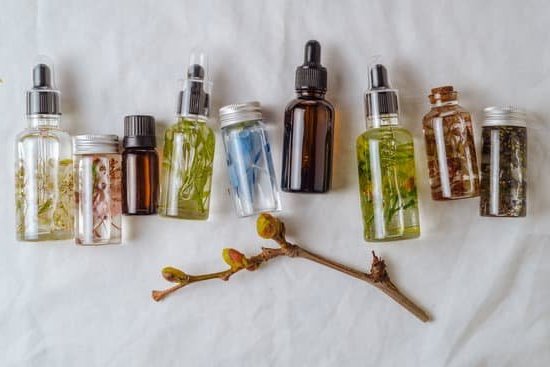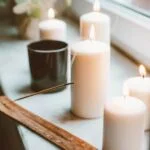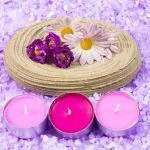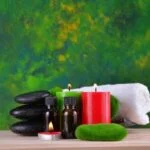What are the best aromatherapy that you can make yourself? Delving into the realm of do-it-yourself (DIY) aromatherapy opens up a world of possibilities for creating custom scents and products tailored to your preferences and needs. By understanding the basics of essential oils, learning mixing techniques, and exploring easy recipes, you can harness the power of aromatherapy in a sustainable and personalized way.
Creating your own aromatherapy products comes with a myriad of benefits beyond just enjoying pleasant scents. DIY aromatherapy allows you to control the ingredients used, ensuring that each product is free from harmful chemicals or additives. Additionally, crafting your own blends allows for customization based on specific therapeutic properties or desired effects, be it relaxation, stress relief, or mood enhancement.
Essential oils serve as the building blocks of DIY aromatherapy, each possessing unique characteristics and benefits. By gaining an understanding of these oils and their properties, you can create effective blends for various purposes. From lavender’s calming properties to peppermint’s invigorating scent, knowing which oils to use is key to crafting successful homemade aromatherapy products.
Benefits of Creating Your Own Aromatherapy Products
Creating your own aromatherapy products comes with a plethora of benefits that go beyond just saving money. One of the main advantages is having complete control over the ingredients used in your blends.
By making your own aromatherapy products, you can ensure that they are free from any artificial fragrances, harsh chemicals, or additives that may be found in commercial products. This allows you to tailor your products to suit your individual preferences and needs, whether it be for relaxation, stress relief, or mental clarity.
Another benefit of creating your own aromatherapy products is the flexibility and creativity it provides. You have the freedom to experiment with different essential oils and blending techniques to create unique scents that resonate with you. This creative process can be not only satisfying but also therapeutic, allowing you to express yourself through the art of scent-making. Additionally, making your own aromatherapy products can be a fun and fulfilling hobby that brings joy and relaxation into your life.
In addition to being able to customize your products and unleash your creativity, creating your own aromatherapy products can also be environmentally friendly. By using natural ingredients and sustainable packaging options, you can reduce waste and minimize the impact on the environment. This eco-friendly approach aligns with a holistic lifestyle focused on health, wellness, and sustainability. Ultimately, making your own aromatherapy products empowers you to take charge of your well-being while contributing to a greener planet.
| Benefits | Description |
|---|---|
| Control Over Ingredients | Ensures free from artificial fragrances and harsh chemicals. |
| Flexibility and Creativity | Allows for experimentation with different essential oils and blending techniques. |
| Environmental Sustainability | Reduces waste through the use of natural ingredients and eco-friendly packaging. |
Essential Oils 101
Essential oils are the cornerstone of aromatherapy, providing powerful scents that can influence our mood and overall well-being. Understanding the basics of essential oils is essential when venturing into the world of DIY aromatherapy. These concentrated plant extracts are derived from various parts of plants such as flowers, leaves, stems, roots, and seeds through processes like steam distillation or cold pressing.
To start your journey into DIY aromatherapy, it’s crucial to select high-quality essential oils that are pure and free from synthetic additives. Here are some of the best essential oils to consider for your homemade creations:
- Lavender: Known for its calming properties, lavender oil is a popular choice for promoting relaxation and reducing stress.
- Peppermint: With its invigorating minty scent, peppermint oil can help boost energy levels and alleviate headaches.
- Lemon: Fresh and uplifting, lemon oil is commonly used to enhance focus and mental clarity.
- Tea Tree: Renowned for its antibacterial properties, tea tree oil is often used in skincare products for its cleansing benefits.
When working with essential oils, it’s important to dilute them properly before applying them to the skin or using them in diffusers. Be sure to follow recommended guidelines for safe usage to avoid adverse reactions. By understanding the fundamentals of essential oils and how they can benefit you, you can create customized blends that cater to your specific needs.
Top 5 Essential Oils for DIY Aromatherapy
Aromatherapy has become a popular way to promote relaxation, improve mood, and alleviate stress. Making your own aromatherapy products allows you to customize scents to suit your preferences and needs. While there are countless essential oils to choose from, some stand out as top choices for DIY aromatherapy.
Lavender essential oil is a versatile oil that is known for its calming and soothing properties. It can help reduce anxiety, promote sleep, and relieve headaches. Peppermint essential oil is another popular choice, with its invigorating scent that can help boost energy levels and improve focus. Citrus essential oils like sweet orange or lemon are uplifting and refreshing, perfect for combating fatigue and brightening your mood.
For those looking to create a grounding blend, consider using cedarwood essential oil. Its woody aroma can promote feelings of stability and security, making it ideal for times when you need a sense of grounding. Lastly, chamomile essential oil is great for promoting relaxation and easing tension. Its gentle floral scent is perfect for bedtime rituals or relaxing baths.
By experimenting with these top 5 essential oils for DIY aromatherapy, you can create custom blends that cater to your specific needs and preferences. Whether you’re looking to unwind after a long day or boost your mood in the morning, these essential oils offer a range of benefits that can enhance your overall well-being.
Mixing and Blending Techniques for Custom Scents
Creating your own custom scents through mixing and blending techniques in aromatherapy can be a fun and rewarding experience. When you make your own aromatic blends, you have the freedom to tailor the scent profiles to suit your preferences and needs. Whether you want a calming blend for relaxation or an invigorating mix for energy, experimenting with different essential oils can help you achieve the perfect custom scent.
One popular blending technique is called “top, middle, and base notes.” This method involves combining essential oils that fall into each of these categories to create a well-rounded aroma. Top notes provide the initial impression of a blend, while middle notes act as the heart of the scent, and base notes offer depth and longevity. By understanding how these different components work together, you can design complex and harmonious fragrances for your aromatherapy products.
Another mixing technique to consider is blending for therapeutic benefits. Certain essential oils have specific properties that can promote relaxation, reduce stress, boost mood, or improve focus. By selecting oils based on their therapeutic qualities and combining them strategically, you can create blends that target your desired outcomes. Whether you are looking to unwind after a long day or feel more alert during work hours, customizing your aromatherapy scents can help address your unique wellness goals.
| Essential Oil | Benefits |
|---|---|
| Lavender | Promotes relaxation and reduces stress |
| Lemon | Uplifts mood and enhances mental clarity |
| Peppermint | Provides invigorating energy and relieves tension headaches |
Experimenting with these essential oils as well as others can help you discover which scents resonate with you most. Remember to always dilute essential oils properly before using them on the skin, especially when creating custom blends for personal care products such as lotions or massage oils. By mastering mixing and blending techniques in aromatherapy, you can unlock endless possibilities for creating signature scents that cater to your well-being.
Easy DIY Aromatherapy Recipes for Relaxation and Stress Relief
Aromatherapy has been used for centuries as a natural way to promote relaxation, reduce stress, and improve overall well-being. Making your own aromatherapy products allows you to customize scents to suit your preferences and create personalized blends that cater to your specific needs. In this section, we will explore some easy DIY aromatherapy recipes that you can make at home for relaxation and stress relief.
Lavender and Chamomile Relaxing Bath Salts
One of the simplest ways to incorporate aromatherapy into your self-care routine is by making relaxing bath salts. Combine Epsom salts with a few drops of lavender essential oil and chamomile essential oil for a soothing blend that can help calm the mind and promote a sense of relaxation. Simply add a cup of the bath salts to warm bathwater and soak for 20-30 minutes to unwind after a long day.
Citrus Bliss Room Spray
Create your own energizing room spray by mixing water with citrus essential oils such as lemon, orange, and grapefruit. Citrus scents are known for their uplifting properties and can help boost mood and increase feelings of positivity. Spray this refreshing blend around your living space whenever you need a quick pick-me-up or want to create a vibrant atmosphere.
Stress Relief Roll-on Blend
For on-the-go stress relief, consider making a convenient roll-on blend that you can easily carry in your purse or pocket. Combine calming essential oils like lavender, bergamot, and frankincense with a carrier oil such as jojoba or sweet almond oil. Roll the blend onto pulse points like wrists or temples for an instant dose of relaxation whenever you need it most.
By experimenting with different combinations of essential oils and simple ingredients, you can create custom aromatherapy products that cater to your unique preferences and support your emotional well-being. These easy DIY recipes are just a starting point for exploring the world of homemade aromatherapy, allowing you to harness the power of natural scents for relaxation and stress relief in your daily life.
Safety Tips and Precautions When Making Homemade Aromatherapy Products
When it comes to creating your own aromatherapy products at home, safety should always be a top priority. While DIY aromatherapy can be a fun and rewarding experience, it’s important to take certain precautions to ensure that you are using essential oils safely and responsibly. Here are some key safety tips to keep in mind when making homemade aromatherapy products:
Patch Test Before Use
Before using any homemade aromatherapy product on your skin, it’s a good idea to perform a patch test. This involves applying a small amount of the product to a small area of skin and waiting 24 hours to see if any irritation or allergic reaction occurs. This is especially important for individuals with sensitive skin or allergies.
Dilute Essential Oils Properly
Essential oils are highly concentrated plant extracts that should never be applied directly to the skin in their undiluted form. Always dilute essential oils in a carrier oil, such as coconut oil or almond oil, before using them in your DIY aromatherapy products. The recommended dilution ratio is usually 1-2% for adults.
Keep Essential Oils Out of Reach of Children and Pets
Essential oils can be toxic if ingested or improperly used. Make sure to store your essential oils in a cool, dark place away from children and pets. Be cautious when diffusing essential oils around animals, as certain oils can be harmful to them.
By following these safety tips and taking proper precautions, you can enjoy the benefits of DIY aromatherapy without putting yourself or others at risk. Remember that essential oils are powerful substances that should be used with care and respect for their potency. Happy blending.
Sustainable and Eco-Friendly Packaging Options for Your DIY Creations
When creating your own aromatherapy products, not only is it important to focus on the quality of ingredients and scents, but also the packaging you choose for your creations. Opting for sustainable and eco-friendly packaging options not only benefits the environment but also adds a special touch to your DIY aromatherapy products. Here are some options to consider:
- Reusable glass containers: Glass containers are not only durable but also recyclable. They can be easily cleaned and reused for different blends of aromatherapy products.
- Biodegradable materials: Look for packaging materials made from biodegradable or compostable materials such as cardboard, paper, or cornstarch-based plastics.
- Airless pump bottles: These types of bottles help preserve the integrity of your homemade aromatherapy products by preventing oxidation and contamination. They are also refillable and reduce product waste.
Choosing sustainable and eco-friendly packaging options showcases your commitment to environmental responsibility while still presenting your DIY aromatherapy products in an aesthetically pleasing manner. By reducing single-use plastics and opting for reusable or biodegradable materials, you contribute to a greener planet while enjoying the therapeutic benefits of your homemade creations.
Investing in sustainable packaging not only benefits the environment but can also attract like-minded customers who appreciate eco-conscious products. By showcasing your dedication to sustainability through thoughtful packaging choices, you enhance the overall appeal of your DIY aromatherapy creations and align yourself with environmentally conscious consumers who value natural, earth-friendly products that promote well-being.
Conclusion
In conclusion, delving into the world of DIY aromatherapy can be a truly empowering experience. By creating your own aromatherapy products, you are not only taking control of the scents that surround you but also harnessing the therapeutic benefits of essential oils. The ability to tailor-make your own blends allows for a personalized approach to relaxation and stress relief, catering to your individual preferences and needs.
When considering what are the best aromatherapy that you can make yourself, it is important to remember that the possibilities are endless. With a basic understanding of essential oils and some creativity in mixing and blending techniques, you can craft unique scents that cater to your mood or desired outcome. Whether you prefer calming lavender for relaxation or invigorating peppermint for an energy boost, the choice is yours when formulating your own DIY aromatherapy creations.
Furthermore, by opting for sustainable and eco-friendly packaging options for your homemade aromatherapy products, you not only contribute to a healthier environment but also create a more holistic experience for yourself. The process of creating your own aromatherapy from start to finish – from selecting essential oils to packaging the final product – instills a sense of pride and accomplishment.
Ultimately, through the art of creating your own aromatherapy, you are enhancing your well-being while embracing a more natural and mindful lifestyle.
Frequently Asked Questions
How Do You Make Homemade Aromatherapy?
Making homemade aromatherapy products is a wonderful way to enjoy the benefits of essential oils. To create your own blends, you can start by choosing the specific oils based on the desired effect – whether it’s relaxation, energy, or even pain relief.
Once you have selected the essential oils, you can mix them with a carrier oil like jojoba or coconut oil to dilute and apply them safely to your skin.
What Essential Oils Can I Make?
The essential oils you can make at home depend on the plants or herbs that you have access to. Some popular options for DIY essential oils include lavender, peppermint, eucalyptus, and lemon. Each essential oil has its unique properties and benefits, so it’s important to research how to properly extract and use them before making your own batch.
What Is the Most Powerful Essential Oil?
Determining the most powerful essential oil can be subjective as each oil serves different purposes and has varying potency levels. However, one commonly regarded as powerful is tea tree oil due to its antiseptic and antimicrobial properties.
Tea tree oil is known for its ability to fight bacteria, fungi, and viruses effectively. Its versatility makes it a popular choice in natural remedies for skin conditions like acne or scalp issues.

Are you looking for a natural way to improve your health and wellbeing?
If so, aromatherapy may be the answer for you.






